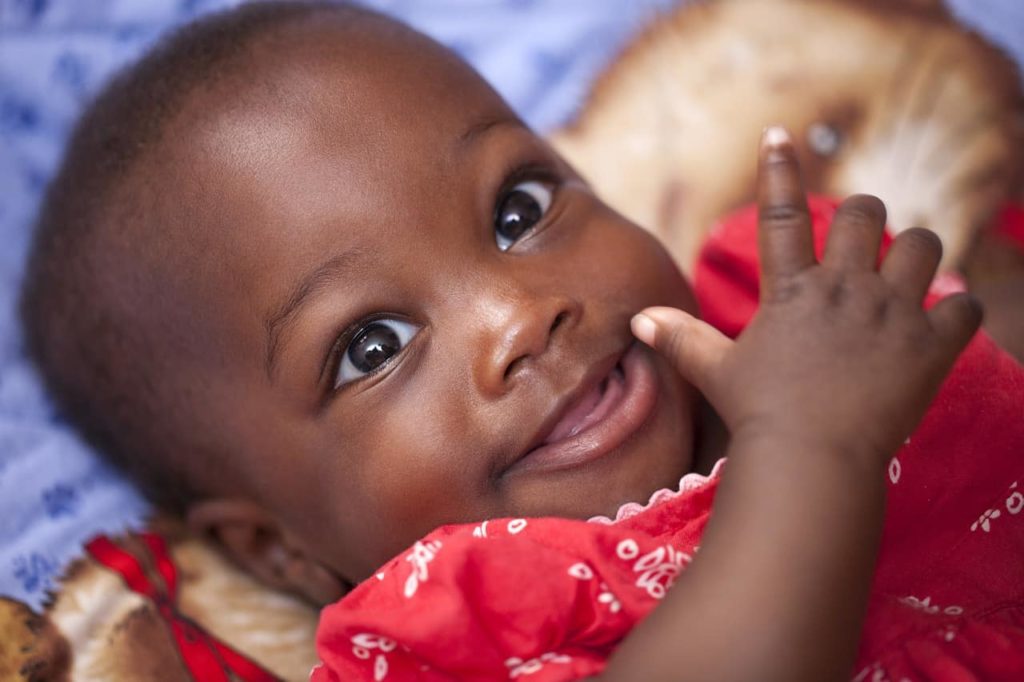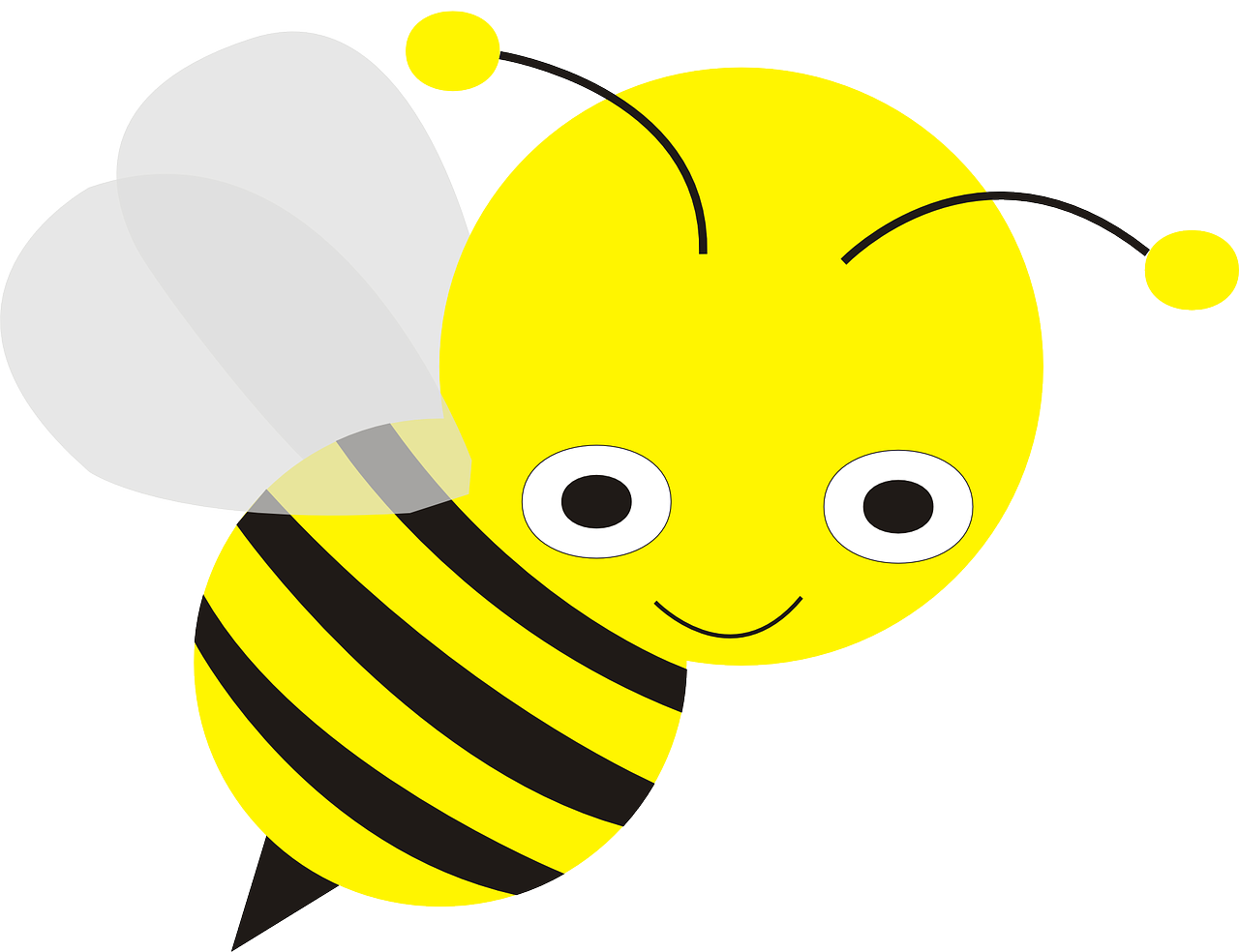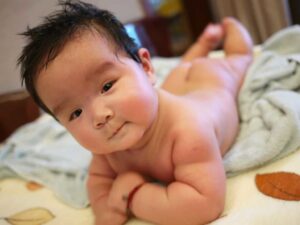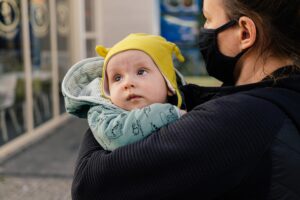
What to do if your baby has a fever
A rule of thumb for calling the doctor, is for infants under three months, the temperature should be above 100F, and if they are over three months, a temperature of over 101F.
Why do babies get fevers?
Babies can get fevers for a variety of reasons, and understanding the whys, can help you determine if you should call your doctor.
On a warm day, and over-dressed baby, particularly an active or squirmy one, can become flushed and hot and cause their temperature to be up.
The first thing to do is remove some of the clothing, and place the child in a cool spot to rest or play quietly. Take their temperature again in 20-30 minutes, if there are no signs that their distress is increasing.
Sometimes just a very active play session in hot weather can make a toddler’s temperature go up, and the cure is the same: remove some clothes, and cool down by taking a break.
Most fevers are the result of a child’s body fighting off an infection of some sort. As white blood cells become active and mount a defense, their temperature will rise.
What symptoms to look for if a baby has a fever?
Other symptoms of an infection include coughing, excessive crying, restlessness, listlessness, lack of appetite, unwillingness to drink, diarrhea, and vomiting. But occasionally, fever is the only symptom, and many times, it does not seem to interfere with their activities or behavior.
A child with a fever, who has other symptoms of distress like vomiting, diarrhea, and excessive crying, may have an illness that requires medical attention.
Check your baby’s temperature, and call your pediatrician with the results, be prepared to give the doctor a list of the symptoms. It is best not to administer children’s fever medication such as Tylenol on your own. If your child becomes ill suddenly, the doctor may want to assess their condition without some of the symptoms being masked.
Recently a Respiratory Syncytial Virus (RSV) Infection is circulating. RSV usually causes of bronchiolitis (inflammation of the small airways in the lung) and pneumonia (infection of the lungs) in children 12 months or younger. RSV symptoms to look for include:
- Runny nose
- Decrease in appetite
- Cough, which may progress to wheezing
In very young infants look for:
- Irritability
- Decreased activity
- Decreased appetite
- Apnea (pauses while breathing)
Fever may not always occur with RSV infections.
What can I do to reduce your baby’s fever?
You can sponge your baby off in the tub, with lukewarm water, running it over their whole body and head. If the doctor has asked that you call them back after a specified time lapse, be sure to follow through and do that and keep note of any changes in your baby’s condition.
Febrile Seizure Frightening Not Dangerous
By Dale Peterson, MD
A young couple recently related this story. Their seemingly healthy toddler had been put to bed as usual. An hour later they heard the child’s crib shaking and they ran to the nursery to investigate. They found him burning up with fever and in the midst of a convulsive episode. They rushed him to an emergency room where tests were run and found to be normal. The physician advised them that the seizure had been triggered by a viral infection and recommended that they follow up with their pediatrician or family physician.
Febrile seizures, which are also called febrile convulsions, usually occur between the ages of six months and five years. They are one of the most common seizure types. Up to four percent of children will have at least one febrile seizure before their sixth birthday. Approximately a third of those who have one episode will have additional febrile seizures. The seizure episodes cease by five or six years of age.
Febrile seizures can be dramatic and frightening, but they are not dangerous. Multiple episodes are no more harmful or significant than a single seizure. They do not predispose to epilepsy later in life nor do they adversely affect intelligence or cause damage to the brain.
As the name implies, the seizure is associated with the presence of a fever. It has been my experience that the primary determining factor as to whether or not a seizure will occur is not the height of the fever, but the rate of rise in body temperature. Most cases occur as described above. A child is put to bed without any sign of illness. Later in the evening or during the night the parents are alerted by the sound of the infant thrashing about, at which time a high fever is present.
Many of the febrile seizures about which I have been consulted were caused by roseola, a viral infection that typically occurs between six months and three years of age. It is characterized by a high fever that appears suddenly and lasts for several days. As the fever subsides a rash usually appears that may fade after several hours or remain for several days. The rash consists of small flat spots or patches that are not itchy or painful. A few spots may be raised. The spots are pink or red and may be surrounded by a white ring. The rash usually starts on the chest, back and abdomen and then spreads to the neck and arms. It may or may not appear on the legs and face.
While physicians are always anxious to do something, there are times when doing nothing is the best course. Fever-reducing medications have been shown to be of no value in preventing febrile seizures. This may be because by the time a fever is recognized the danger has generally passed.
Thankfully, anticonvulsant medications, which from the 1970s through much of the 1990s were widely prescribed to infants and children who had experienced a febrile seizure, are no longer recommended. The drugs were ineffective when used intermittently (probably for the same reason that fever reducers are ineffective) and caused behavioral changes, weight disturbances, decreased learning capacity, and in some instances fatal reactions involving the liver and pancreas when taken on an ongoing basis. Spinal taps, which were once done routinely, are now rarely performed.
When a seizure occurs it is important to seek medical attention to determine whether it was due to fever or to a more serious condition. If it is determined that it was a febrile seizure you can rest assured that your child will not suffer any adverse consequences as a result of having experienced it.









